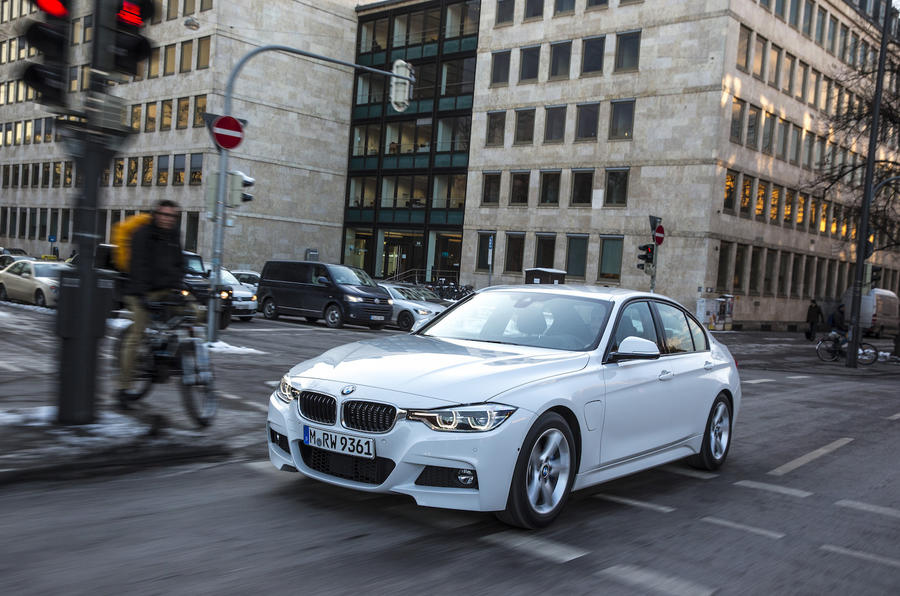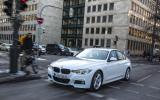What is it?
The BMW 330e is the latest entry in the fast-expanding market for plug-in hybrids. The demand is being driven not only by ever tightening EU mandated fleet average emission regulations but also government-backed clean vehicle incentives, such as the OLEV scheme in place here in the UK.
With the establishment of its i brand we’ve come to expect big things from BMW when it comes to electric and hybrid models. But while the 330e doesn’t push the technical boundaries in quite the same way as the BMW i3 and i8 did, it does rely heavily on the expertise gained in their development, not least in the area of its lithium ion battery cell technology and the power electronics which regulate the interaction between its electric motor and petrol engine.
To be sold exclusively in saloon guise at price of £31,435 in the UK (after a £2500 government grant), it joins the likes of the Mercedes-Benz C400e and Volkswagen Passat GTE in aiming to sway executive car buyers away from traditional petrol and diesel models by tempting them with the promise of a zero-emission range of up to 25 miles and headlining combined economy of 148.7mpg.
The starting point for the new BMW is the recently facelifted 320i, with which the 330e shares its turbocharged 2.0-litre four-cylinder petrol engine. Mounted longitudinally, it produces a peak of 181bhp along with 214lb ft from just 1350rpm.
A brushless electric motor mounted within the forward section of the 330e’s standard eight-speed automatic gearbox delivers an added 87bhp and 184lb ft, either in combination with the petrol powerplant in hybrid mode or on its own in pure-electric mode.
All up, BMW’s latest plug-in hybrid provides a total system output of 249bhp and 398lb ft – figures the German car maker suggests put the model on a performance par with the 248bhp turbocharged four-cylinder 330i, which sells for £33,005. And just like its petrol engine sibling, the 330e delivers its drive to the rear wheels.
Energy to run the electric motor is provided by 7.6kWh lithium ion battery mounted in the floor of the boot. It is charged via a socket mounted behind a flap in the front wing. BMW claims an 80% recharge time of just over two hours via an optional wallbox charger, or it can be plugged into the regular mains, via which the recharge time extends to over three hours.
Additional electrical stores can be generated on the run using a battery charge function. The battery also receives a trickle feed during periods of trailing throttle and under braking, although never sufficient to add much to the claimed all-electric range. At 370 litres, boot capacity is reduced by 110 litres over other 3 Series saloon models thanks to the onboard batteries.































Join the debate
Add your comment
TOTAL energy consumption Petrol + KWh?
Heavy ICE when in EV mode, heavy dead battery in ICE mode! Fund research for "pure"EV and H2 maybe.
Meantime I'll keep driving something that betters official tests:
2.4l/100km Audi A2 1.2 TDI, CD 0.25, 875kg.
TOTAL energy consumption Petrol + KWh?
Heavy ICE when in EV mode, heavy dead battery in ICE mode! Fund research for "pure"EV and H2 maybe.
Meantime I'll keep driving something that betters official tests:
2.4l/100km Audi A2 1.2 TDI, CD 0.25, 875kg.
What if you never plug it in?
I'd have thought with regenerative braking, that it would eventually charge up in certain driving situations, but the roadtest makes it sound like it woudldn't.
I don't like it. A heavy, complex car which would be far greener if it just had a smaller, lighter engine in the first place.